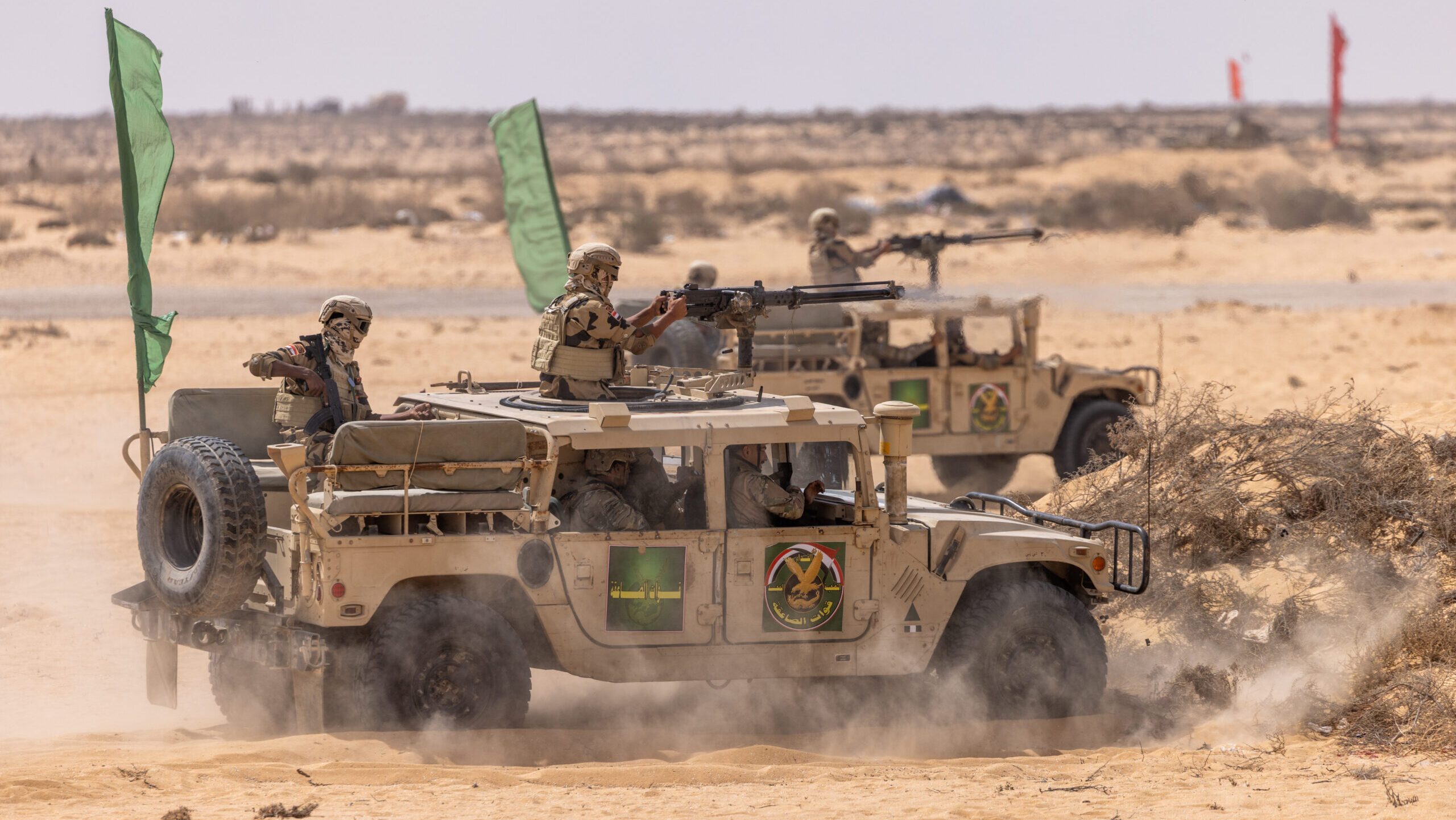
While Chinese fighter jets split Egypt’s skies in May, it was American armor that shook its sands earlier this month. Bright Star 25, one of the world’s largest multinational military exercises, co-hosted by Egypt and the United States, ran from August 28 to September 10.
The drills were a sprawling, robust affair. Approximately 1,500 American personnel participated in Bright Star 25, operating M1A2 Abrams tanks, M2A3 Bradley infantry fighting vehicles, KC-135 Stratotankers, and F-16 fighter jets. Forty-four nations participated, reportedly including Cyprus, Greece, Italy, Jordan, Qatar, and Saudi Arabia. Fourteen countries together contributed more than 8,000 troops, while 30 others participated as observers. Missions drilled included amphibious assault, irregular warfare, aerial refueling, naval maneuvers, and combined joint task force planning.
To an outside observer, the drills would appear to reflect that Washington’s relationship with Cairo, a cornerstone of US policy in the region, remains on solid ground. But underneath all that military hardware, the sands are shifting, as Egypt slides closer to China. It’s time for the US to wake up to the danger, reorient its bilateral relationship and perhaps use the next Bright Star to make a different point altogether.
Bright Star exercises began in 1980, born out of the Camp David Accords that saw Egypt become the first Arab state to make peace with Israel, and have long been a barometer of US-Egypt ties. While they came to a halt during the Arab Spring, their return in 2017 under Egyptian President Abdel Fatah El Sisi was meant to reaffirm the strategic partnership that successive administrations in Washington have called indispensable.
But though the US-Egypt relationship may be indispensable now, there’s competition. Just four months earlier, Cairo hosted “Eagles of Civilization 2025,” the largest Sino-Egyptian bilateral exercise ever.
Featuring Chinese J-10 fighter jets, KJ-500 early warning aircraft, and Z-20 helicopters, the drill signaled Cairo’s deepening military relationship with Beijing. Far from being a one-off, Eagles of Civilization 2025 capped a decade of growing Sino-Chinese defense ties, involving arms sales, technology transfers, and Chinese participation in Egyptian infrastructure projects with dual-use potential.
One month, Cairo is integrating Chinese forces and reportedly purchasing Chinese-made air defense systems. The next, it is carrying out exercises with the United States and NATO partners. To Egyptian officials, this is all a part of a hedging strategy aimed at maximizing benefits from both Washington and Beijing while minimizing costs.
Unless Washington confronts Cairo’s double game, the Bright Star exercise series risks becoming less a symbol of enduring partnership and more a symptom of flawed US strategy. To Washington, Egypt’s behavior is a strategic liability.
Joint exercises like Bright Star give Egypt familiarity with some US tactics, techniques, and procedures. If that information makes its way to Chinese forces, it could erode US military advantages. And more broadly, this situation sends muddled signals to the region: if Egypt can have it both ways, why shouldn’t others? While Washington cannot stop Cairo from hedging altogether, it can set clearer boundaries and guidelines.
US financial assistance to Egypt has continued on autopilot. Washington provides Cairo $1.3 billion annually in Foreign Military Financing (FMF), nominally to sustain peace with Israel, support counterterrorism, and increase interoperability with US forces. In practice, it has become a subsidy for the regime helping to arm Egypt while simultaneously freeing up Cairo’s own funds to purchase Chinese military systems. Congress should consider Cairo’s actions and initiate a review to determine whether current levels of FMF to Egypt align with U.S. interests.
Cairo shouldn’t be overconfident in the outcome of such a review. After all, the Trump administration suspended nearly all security aid to Pakistan in January 2018 after running out of patience with Islamabad’s double game of receiving US funding while backing the Taliban. More recently, India, another Bright Star 25 participant, has faced tariffs over continued purchases of Russian oil.
Washington can also restrict the scope of Bright Star exercises as a signal of its displeasure. For example, if Cairo continues to deepen ties with China, the next Bright Star should be smaller in size and limited in mission sets.
The Bright Star exercises have been a reminder of what US- Egyptian cooperation can deliver by enhancing interoperability and operational readiness. Yet without a recalibration based on Cairo’s drift toward Beijing, Bright Star and other drills risk projecting a façade of US influence even as China gains ground. Bright Star should reflect an enduring partnership, not an outdated commitment that no longer aligns with US strategic interests.



